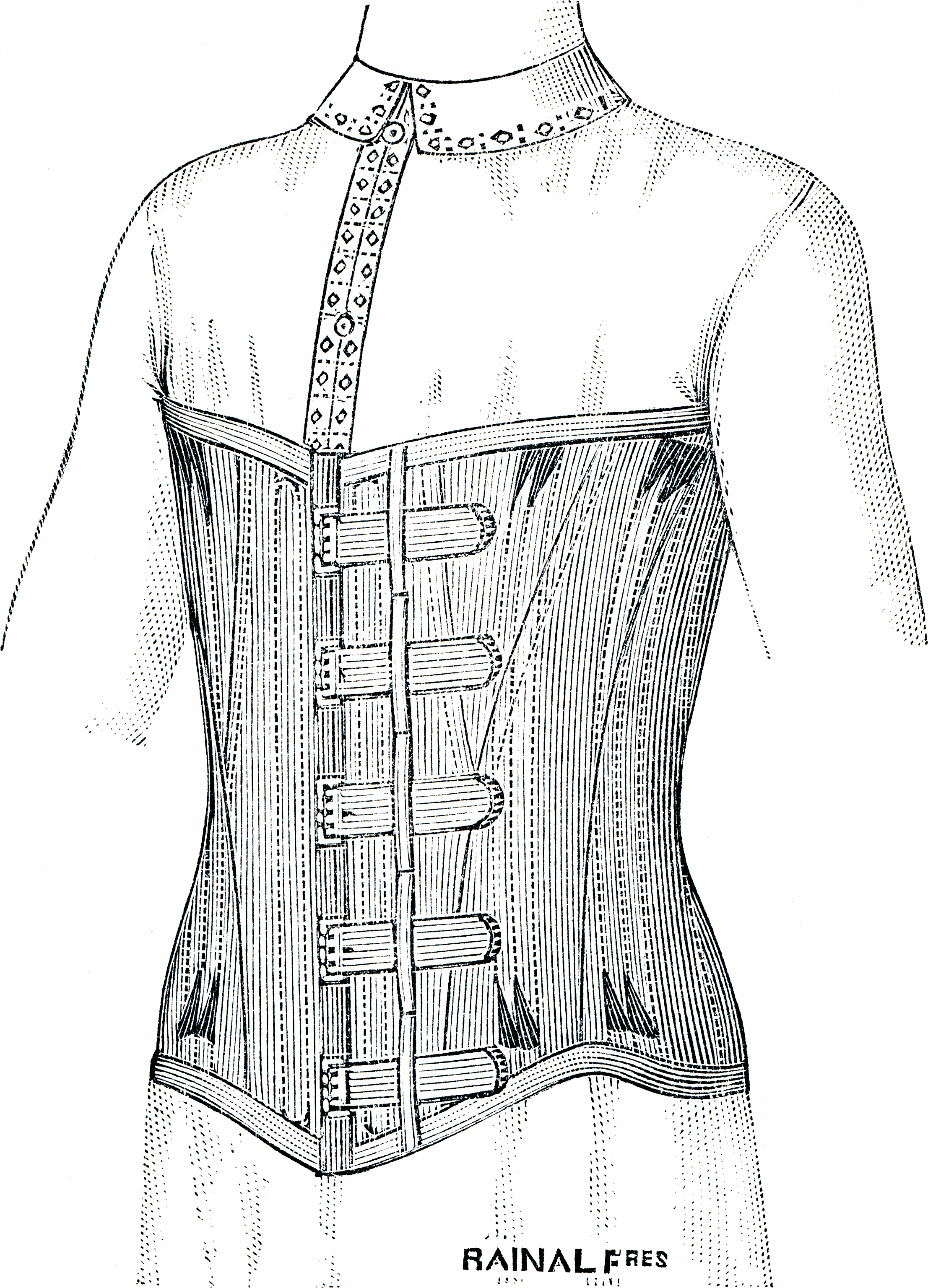
In searching for new site content, two pieces of media attracted my attention on the same day. The theme of the media is not totally new, but still disputable, and is especially of interest within the realm of fashion and gender. I'm talking about male corsets, folks. My colleagues have probably stopped reading this post by now (I practically jammed its history and theories down their throats last semester) but perhaps this topic is of interest to others, specifically those who didn't even know male corsets existed.
Male corsetry is actually more of a common practice than many believe. I'm always met with shock and disbelief when the subject arises. "Men never wore corsets!" people vehemently declare. "I've never seen a male corset before, and I don't believe any exist." I first tell the non-believers to check the trunks of their grandfathers and/or ask them personally. Because well up until the 1950s, many men wore girdles, wide belts and other waist-restricting devices. They may not have called them corsets (due to the association with the feminine garment) but they performed the same function. People may say "panties" versus "boxers" but both are essentially "underwear" - just because they are gendered does not mean their purposes are vastly different.
I hope to develop the history of male corsets in future posts. But I think it is interesting to work backwards and focus on contemporary sightings for now.
John Galliano's Fall 2010 collection is definitely inspired by the past. Tailored suits, bowler hats, hounds tooth fabrics, canes and vests all made an appearance at some point during the show. And then came the corsets, bending the gender lines and exposing the world of undress in a very effective manner. What was Galliano's ultimate goal in doing so? Perhaps he is trying to make a statement about how fashion is not always as it seems... (Click to read more)
Corsets and girdles create a false illusion for many, squeezing in undesirable spots, tightening "loose ends", forcing erect posture. People go to great lengths by which to hide their enhancements, especially when it comes to sexual encounters (how many of us have undressed in the dark or popped into the restroom, so that our significant other is not privy to silicon breast inserts or "stuffed sock" codpieces? This is a topic in need of analysis in and of itself). Perhaps Galliano wanted to play with the idea of fashion as camouflage, literally exposing the truth behind our bodies and emphasizing the idea that natural, bodily perfection is not an option for even the most attractive of people.
Another theory is that Galliano has really done his homework with this collection. Noted by viewers as his "tamest collection", his runway is an ode to the past. To be true, many of the historically-based outfits would have been worn with waist-restricting devices which match exactly those that Galliano designed. The model on the right exudes this theory; socks held up with garters, a girdle worn as a bottom, a button-down shirt tucked into the girdle and an overcoat being the only semblance of a normal outfit. Did Galliano know - and try to explain to his audience - that these garments actually existed for men as they did for women?
The other piece of media that caught my eye was a video of a famous male ice skater, Johnny Weir. At the US Nationals 2010, he performed to Lady GaGa's hit, "Poker Face", with an outfit to match her unusual, thought-provoking style (click above to view his performance). His suit is designed with a corset in mind - doubtful that he actually wears one, given the activity, but it makes you wonder about the costume designer's choice.

Weir's sexuality has been on the minds of the media and remains cloudy; his penchant for high fashion has caused many to label him, despite his protestations and ability to shrug off the accusations. He may be toying with GaGa's cross-dressing themes, how they radiate in society, may want to cause controversy about the role fashion plays when dealing with sexuality. His choice of clothing sends the message he has touted for so long - it should be about the sport, and nothing else.
Or maybe, he had an "in" on Galliano's collection and is merely projecting a hopeful trend.
Further reading on contemporary male corsetry:
"John Galliano Delivers Man Corsets" - The Cut, fashion blog for New York Magazine
John Galliano Fall 2010 Menswear runway photos
Fetish: Fashion, Sex and Power - Valerie Steele
Fashion and Fetishism: a Social History of the Corset, Tight-Lacing, and Other Forms of Body-Sculpture in the West - David Kunzle
Male Corsetry - blog dedicated to male tight lacing


We at Textile Talk recently wrote about corsetry, with a focus on suppliers. Not once did we think to mention that this is not a female specific fashion statement. Thanks for opening our eyes to the possibilities!
ReplyDelete~Nicole
http://fabricstockexchange.com/blog/fabric/no-bones-about-it-corsetry-has-hit-the-runways/
No problem! I'll check out your piece, looks cool!
ReplyDelete